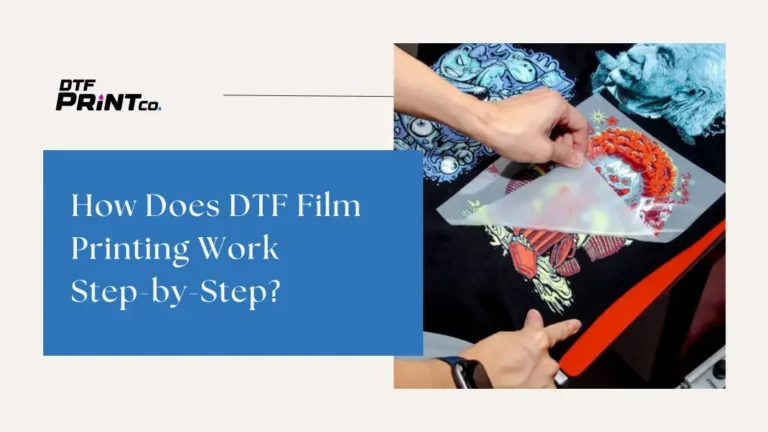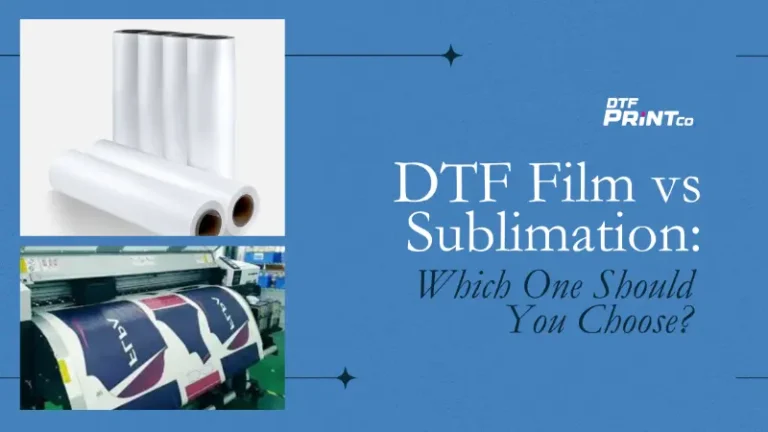
The Difference Between Hot Peel and Cold Peel DTF Film
Direct To Film (DTF) printing is rapidly becoming a popular choice for custom apparel and garment decoration. Unlike traditional screen printing or direct-to-garment (DTG) methods,

Direct-to-Film (DTF) printing is a game-changer in garment decoration, offering vibrant, high-quality prints on a variety of fabrics. But let’s be real—if your transfers aren’t sticking properly, it’s beyond frustrating. Whether your DTF prints are peeling, cracking, or just refusing to adhere, you’re not alone.
Let’s break down the common adhesion problems and, more importantly, how to fix them. This guide will take you through every possible reason why your DTF transfers aren’t cooperating and how to get them back on track.
Adhesion in DTF printing refers to the ability of the transfer to bond securely to the fabric. When done correctly, the transfer should be smooth, flexible, and durable enough to withstand washing and regular wear. However, several factors can affect adhesion, including:
Before attempting to fix adhesion problems, it’s important to identify the root cause. Let’s look at the most common issues and how to address them.
| Issue | Possible Cause | Solution |
| Transfers peeling off the fabric | Low heat, insufficient pressure, improper powder adhesion | Increase heat and pressure, ensure even powder application |
| Transfers sticking to the heat press | Incorrect film type, excessive heat, poor release film quality | Use high-quality cold-peel film, adjust temperature |
| Cracking or lifting after washing | Under-cured powder, incompatible fabric, excessive stretching | Improve curing process, use fabric with minimal stretch |
| Patchy adhesion | Uneven heat distribution, incorrect powder-to-film ratio | Check heat press temperature, apply powder evenly |
Preparation is key to ensuring successful DTF transfers. Before you even press the design onto the fabric, take these steps to optimize adhesion:
Not all DTF films and powders are created equal. Cheaper products may have inconsistent coatings, leading to poor adhesion. Invest in high-quality materials from reputable suppliers to ensure consistent results.
Moisture trapped in the fabric can interfere with adhesion, causing peeling or incomplete bonding. Preheat the fabric for 5-10 seconds at 280°F–300°F (140°C–150°C) before applying the transfer.
Fabric softeners, lint, and dust can prevent proper adhesion. Always use a lint roller before pressing, and avoid pre-washing garments with fabric softeners.
Your heat press is one of the most crucial factors in DTF adhesion. Small temperature or pressure deviations can make a significant difference.
The adhesive powder is what bonds the ink to the fabric. If applied incorrectly, you’ll experience peeling, cracking, or weak adhesion.
Curing is the process of melting the adhesive powder so that it properly bonds with the ink. If the powder is not fully cured, the transfer won’t adhere properly.
Some fabrics work better with DTF transfers than others. Using the wrong fabric can result in poor adhesion, peeling, or cracking.
If printing on stretch fabrics, use a flexible adhesive powder designed for elasticity.
This often happens due to excessive heat or poor-quality release film. Try lowering the temperature slightly and using a high-quality cold-peel film.
Yes, high humidity can prevent the powder from curing correctly. It’s best to work in a controlled environment with temperatures between 65-75°F (18-24°C) and humidity under 60%.
Cracking or lifting usually occurs due to under-cured powder, fabric incompatibility, or washing garments in hot water with aggressive detergents. Ensure proper curing and recommend washing inside-out in cold water.
The powder should evenly coat the printed design without clumping. Too much powder creates a thick texture, while too little results in weak adhesion.
Regular DTF transfers may crack on highly stretchy fabrics. Use a flexible powder adhesive designed for elasticity to improve durability.
DTF adhesion issues can be frustrating, but troubleshooting them systematically will help you achieve flawless transfers. The key is to control all variables—heat, pressure, powder application, and curing—while using high-quality materials.
If you’re still experiencing issues, take a step back and analyze each factor individually. By fine-tuning your process, you’ll create long-lasting, high-quality DTF prints every time.
Have you encountered tricky adhesion problems? Share your experience.

Direct To Film (DTF) printing is rapidly becoming a popular choice for custom apparel and garment decoration. Unlike traditional screen printing or direct-to-garment (DTG) methods,

If you’ve ever dreamed of creating your own custom shirts, hoodies, or tote bags without spending a fortune or dealing with messy screens, there’s some

If you’re looking to start or grow a custom apparel business, you’ve probably heard about DTF film and sublimation printing. These are two of the

2023 - 2024 © ALL RIGHTS RESERVED